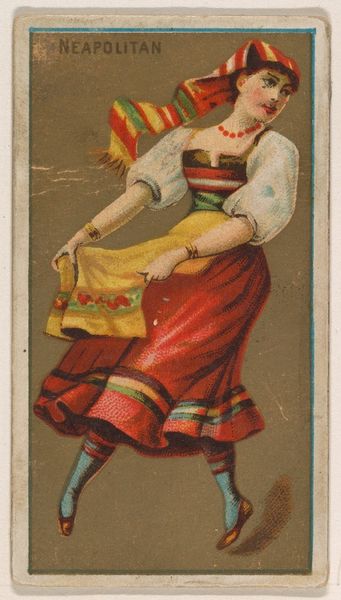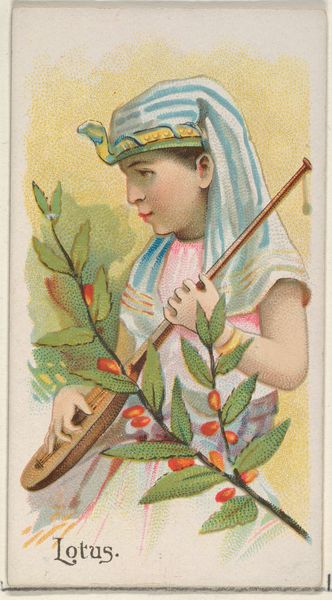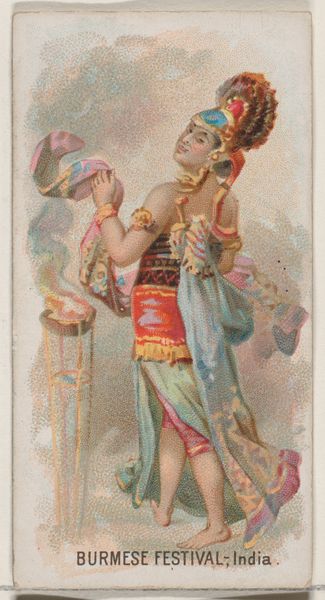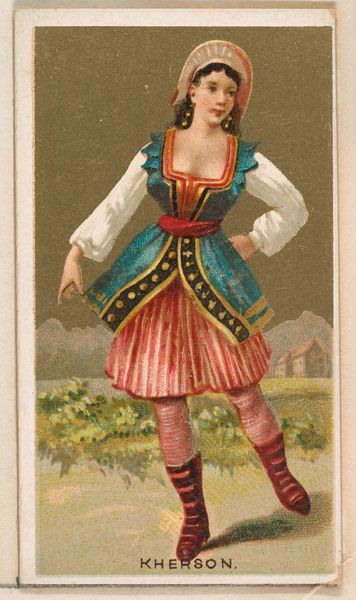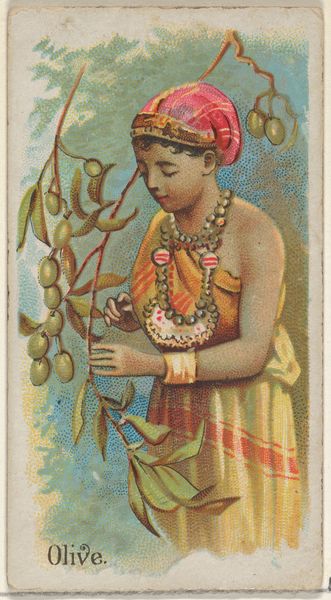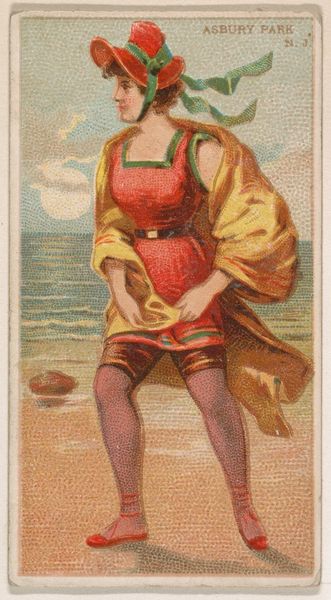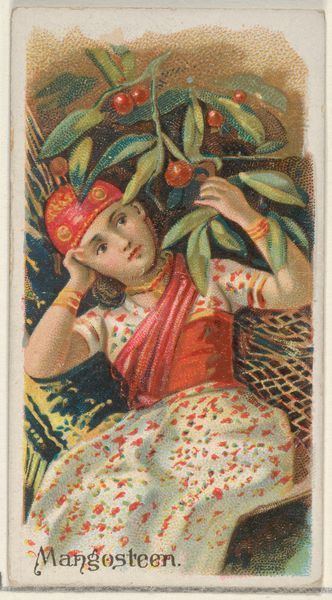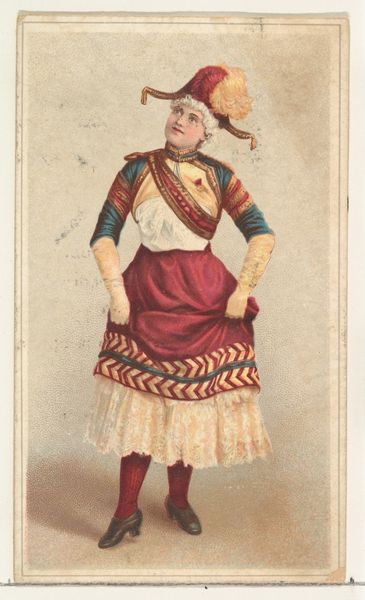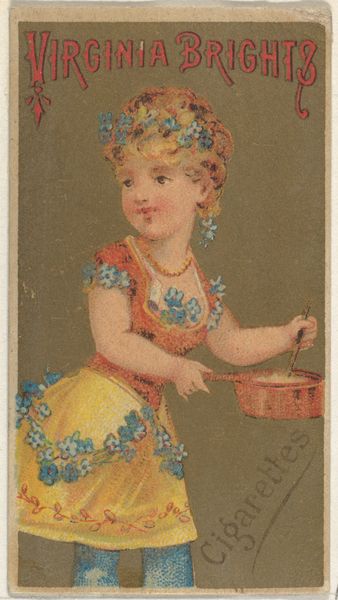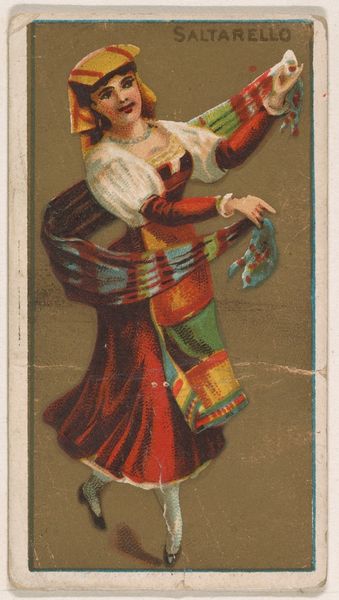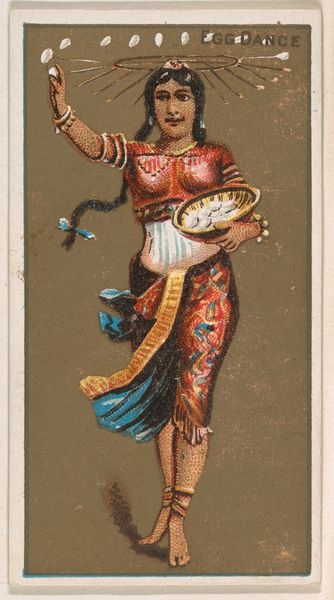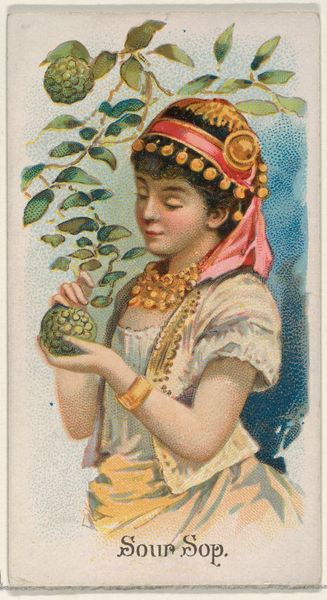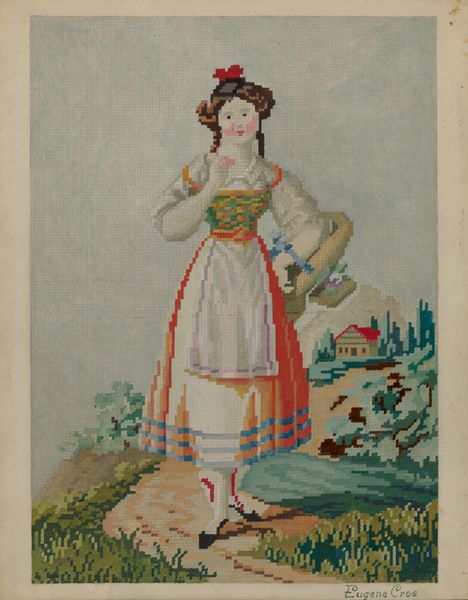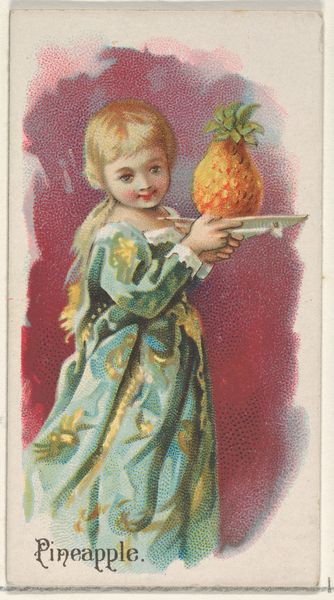
Wood Apple of Bengal, from the Fruits series (N12) for Allen & Ginter Cigarettes Brands 1891
0:00
0:00
drawing, print, watercolor
#
portrait
#
drawing
# print
#
caricature
#
watercolor
#
fruit
#
coloured pencil
#
orientalism
#
watercolour illustration
#
post-impressionism
#
portrait art
#
watercolor
Dimensions: Sheet: 2 3/4 x 1 1/2 in. (7 x 3.8 cm)
Copyright: Public Domain
Editor: This watercolor print, "Wood Apple of Bengal," produced in 1891 for Allen & Ginter Cigarettes, part of the Fruits series, is fascinating. The figure’s stylized rendering gives it an almost dreamlike quality. What jumps out at you? Curator: I'm drawn to the material conditions of its creation and consumption. It's a piece of commercial ephemera, produced to promote the consumption of cigarettes. The materials, the watercolor and the print, speak to its mass production. Who were the artists producing these images and what were their working conditions? Editor: That's a good question, I never thought about that. It looks like something of much higher art. How were these materials perceived at the time? Curator: Exactly! Consider the class implications. Cigarettes were becoming more accessible, signaling a shift in consumption habits. Was this print considered “art” or mere advertisement? The combination of watercolor, a medium often associated with fine art, and printing, a technique enabling mass distribution, blurs those boundaries. Where did the company source the knowledge to make this representation of Bengal? Was that labor sourced in Bengal too, or some local expert appropriating imagery from afar? Editor: So you’re saying it’s not just about the image itself, but what the materials and their circulation reveal about society at that moment. It's kind of shocking to see how much labor goes into even the simplest image. I guess I'll be considering art a little differently now! Curator: Precisely! This artwork and its context show how art, commerce, labor and cultural representation are interconnected. Considering these points can enrich our interpretation of this work, far beyond the image of the fruit.
Comments
No comments
Be the first to comment and join the conversation on the ultimate creative platform.
